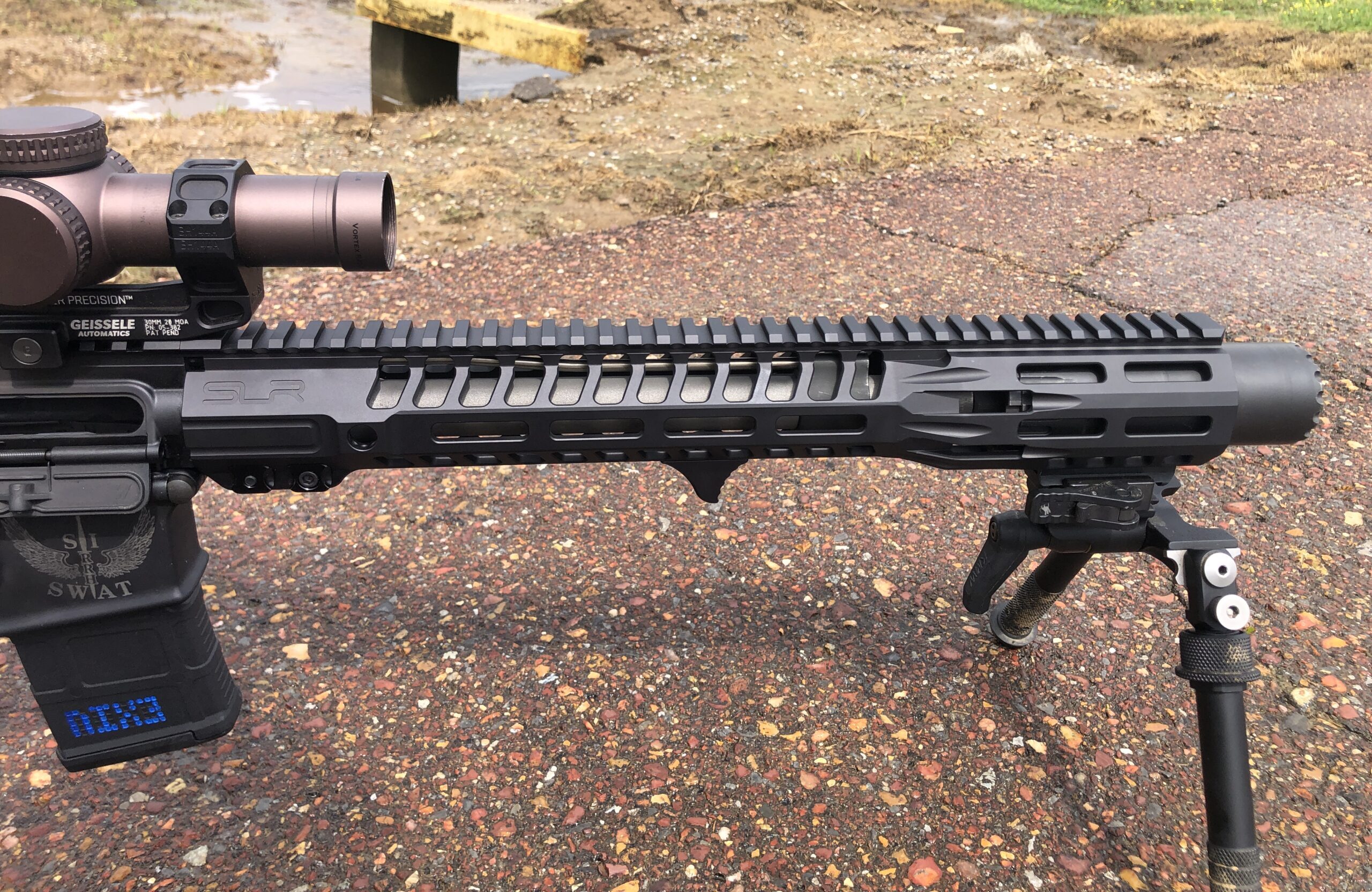In 2021, we published [002] The LE-DMR Concept as one of our first articles. The purpose was to outline the plausibility of adapting the precision capabilities of a military DMR to a short-barreled rifle suitable for Law Enforcement or private citizens. We called it the Law Enforcement Designated Marksman Rifle (LE-DMR) concept. If you haven’t read it already, we strongly encourage you to go read that article first then come back.
Since then our interest in the concept has only increased. The original idea – adding precision capability and positive identification (PID) at distance to a duty-grade patrol rifle by leveraging the benefits of a Low Power Variable Optic (LPVO) – is still relevant. In the years since 2021, the market for LPVOs has only increased. At Zero Theory, we added an LPVO Operator class to our open enrollment courses and have been contracted by LE agencies for similar training. In other words, our anecdotal experience indicates increasing interest in LPVOs. Marrying an LPVO with a precision-capable, duty-grade patrol rifle seems an obvious choice. And that’s exactly what the LE-DMR project set out to do.
As an aside, the term LE-DMR is up for debate, as far as we’re concerned. We made it up. It makes sense to us, but it’s not an industry standard by any means. When LE agencies deploy LPVOs, some will do so as a simple optics upgrade. Others may institute a full-blown Patrol Designated Marksman program, complete with equipment issue, qualifications, and a robust sustainment program. Whatever the case, the terminology is not of critical importance. We use the term LE-DMR to describe a concept, but the concept itself may be implemented in any number of ways.
Build Changes
Our particular rifle, or legally speaking, our “braced pistol” (thanks for nothing, ATF), was based on a unique 11.5” barrel from Craddock Precision and originally used a 10” handguard. We mentioned the possibility of eventually swapping the handguard to a longer version which would allow us to nest the silencer. Long story short, that’s what we’ve now done. We used one of the new SD handguards from SLR Rifleworks and we really love it. It allowed us to push the bipod further out which increased stability in the prone position. It also added more real estate for mounting gadgets and provided additional protection from burns when transitioning to pistol in combat shooting. Finally, and critically important to consider, it looked cooler. The importance of this last point cannot be overstated.
One of our original concerns was the potential for the silencer to heat up the handguard to the point it became difficult or impossible to use. After several months of use, however, we have not found it to be a problem. We’re still keeping an eye out, but we’re fairly confident that concern was overblown. After all, you need to be very careful anytime your silencer heats up that much, whether it’s nested or not.
Otherwise, no other significant changes have been made to the build. We did submit a Form 1 to convert it into an SBR, but that was more related to the lower and less relevant to the issue at hand.
Operational Updates
Usefulness of the rifle has continued apace. In terms of precision, it is still shooting lights out. One of the attached pictures shows a couple of recent groups which averaged less than 0.5 MOA at 100 yards. These particular groups were shot during the zeroing process after mounting a new optic. They were not intended as a practical measurement of the rifle’s accuracy potential. That said, they do reflect positively on the rifle’s capabilities. Further, these groups were shot with simple 55 grain training ammunition and only 6x magnification. In the near future we will run it through our Practical Precision Test using match grade ammo to get an official score. We’re confident it will average 1 MOA or better, which is pretty fantastic for a shorty gasser.
Handling characteristics changed slightly. The longer handguard made it a little more front-heavy. It’s a noticeable change, but not significant. After running it for a little while you don’t really notice it. We’ll keep an eye on it as we attach more lights, lasers, kazoos, etc, but we don’t expect any dramatic changes.
Capability at distance has not changed. The concept has really proven itself more and more since the first article. For example, we recently conducted an LPVO Operator course where shooters engaged targets at ranges from 5 yards to 350 yards. Shooters had no problems getting first-round-hits on 12” steel targets at 350 yards, several with short 10” barrels. This served to reinforce our personal experience as well, that is, the 11.5” barrel is easily capable of precision engagements out to 350 yards. For LE and private citizen use, that is more than enough distance for practical use.
Summary
We originally theorized the precision-capable patrol rifle was a realistic and useful concept in the LE context. This was based on the capabilities of the technology at the time as well as the accessibility to most departments in terms of cost. In the approximately three years since publication of the first article, our experience with our sample rifle and contacts with LE agencies has only served to reinforce this concept. We improved our rifle by upgrading the handguard and the scope. The core concept, however, has not changed. We still think it’s great and we fully expect increasing adoption of the concept by LE agencies and private citizens alike.




